NCERT Solutions for Chapter 16 Light Class 8
1. Suppose you are in a dark room. Can you see objects in the room? Can you see objects outside the room. Explain.
Answer:
An object becomes visible when light reaches our eyes after being reflected from the object.If we are in dark room, then it is not possible for us to see the objects because no light is reflected from the object.If there is light outside the room, we can see the objects lying out there.
2. Differentiate between regular and diffused reflection. Does diffused reflection mean the failure of the laws of reflection?
Answer:
| Regular reflection | Diffused reflection |
| It takes place from a smooth or regular surface | It takes place from a rough surface. |
| All reflected rays are parallel to each other for parallel incident ray. | Reflected rays are not parallel to each other for parallel incident rays. |
| Images are formed by regular reflection | Images are not formed by diffused reflection |
| For Ex: Reflection by plane mirror | Reflection by road surface. |
Laws of reflection are not violated in diffused or irregular reflection.
3. Mention against each of the following whether regular or diffused reflection will take place when a beam of light strikes. Justify your answer in each case.
(a) Polished wooden table
Regular reflection
polished wooden table has a smooth surface.when a beam of light reflects from it, a regular reflection will take place.Hence reflection from a polished table will be regular.
(b) Chalk powder
Diffused reflection
Chalk powder spread on a surface is an example of irregular surface.It is not smooth.Therefore diffused reflection will take place from chalk powder.
(c) Cardboard surface
Diffused reflection
Cardboard surface is an example of irregular surface.Hence diffused reflection will take place from cardboard surface.
(d) Marble floor with water spread over it
Regular Reflection
A marble floor with water spread over it provides a smooth surface. So, when a beam of light reflects from it, a regular reflection will take place.
(e) Mirror
Regular Reflection
A mirror has a smooth surface. So, when a beam of light reflects from it, a regular reflection will take place.
(f) Piece of paper
Diffused Reflection
Although a piece of paper may look smooth, but it has many irregularities on its surface.Due to this reason, it will give a diffused reflection.
4. State the laws of reflection.
Answer:
1)Angle of incidence is equal to angle of reflection. ∠i = ∠r
2)Incident ray, reflected ray and normal to the reflecting surface at the point of incidence lie in the same plane.
5. Describe an activity to show that the incident ray, the reflected ray and the normal at the point of incidence lie in the same plane.
Answer:
Take a plane mirror and stand it on a plane sheet of paper with a block.Fix a white sheet of stiff paper on a drawing board or a table. Now draw an incidence line. Now see in the mirror and mark the points on the paper, where you find the line is travelling after getting reflected from the mirror. Remove the mirror and draw a perpendicular on the mirror line. Join the points to make the reflected ray. You will see that incident ray, reflected ray and normal will be in the same plane, i.e. on the sheet of paper.
6. Fill in the blanks in the following.
(a) A person 1 m in front of a plane mirror seems to be _______________ m
away from his image.
(b) If you touch your ____________ ear with right hand in front of a plane
mirror it will be seen in the mirror that your right ear is touched with _______.
(c) The size of the pupil becomes ____________ when you see in dim light.
(d) Night birds have ____________ cones than rods in their eyes.
Answer:
(a) A person 1 m in front of a plane mirror seems to be 2 m away from his image.
(b) If you touch your left ear with right hand in front of a plane
mirror it will be seen in the mirror that your right ear is touched with left hand.
(c) The size of the pupil becomes large when you see in dim light.
(d) Night birds have less cones than rods in their eyes.
Choose the correct option in Questions 7 – 8
7. Angle of incidence is equal to the angle of reflection.
(a) Always (b) Sometimes
(c) Under special conditions (d) Never
Answer: (a) Always
8. Image formed by a plane mirror is
(a) virtual, behind the mirror and enlarged.
(b) virtual, behind the mirror and of the same size as the object.
(c) real at the surface of the mirror and enlarged.
(d) real, behind the mirror and of the same size as the object.
Answer: (b) virtual, behind the mirror and of the same size as the object.
9. Describe the construction of a kaleidoscope.
Answer:
A kaleidoscope is made up of three rectangular mirror strips joined together to form a prism. These are fix in a circular cardboard like tube or tube of a thick chart paper. The tube is slightly longer than the mirror strips. One end of the tube remains closed by a cardboard disc having a hole in the centre, through which one can see. To make the disc durable, a piece of transparent plastic sheet is pasted under the cardboard disc. At the other end, touching the mirrors, a circular plane glass plate is fixed. On this glass plate several small pieces of coloured glass is placed to form multiple images.
10. Draw a labelled sketch of the human eye.
Answer:
11. Gurmit wanted to perform Activity 16.8 using a laser torch. Her teacher advised her not to do so. Can you explain the basis of the teacher’s advise?
Answer:
Intensity of laser light is very high and therefore it is harmful for our eyes.It carries large amount of energy and can cause permanent damage to eyes.So one should not look at laser beam directly or indirectly.
12. Explain how you can take care of your eyes.
Answer:
We can take care of our eyes by taking following measures:
1 Do not read in too bright or too dim light.
2 Avoid direct exposure of sunlight to the eye.
3 Do not keep the book too close to your eyes; while reading.
4 If something gets into the eye, do not rub the eye. Wash it with cold water.
5 Wash our eyes frequently with clean water.
13. What is the angle of incidence of a ray if the reflected ray is at an angle of 90° to the incident ray?
Answer:
We know that angle of incident ray is equal to angle of reflected ray. ⇒ ∠i = ∠r
But it is given that
∠i + ∠r = 90°
⇒ ∠i + ∠i = 90°
⇒ 2∠i = 90°
⇒ ∠i= 90° /2 = 45°
14. How many images of a candle will be formed if it is placed between two parallel plane mirrors separated by 40 cm?
Answer:
Infinite images will be formed because of multiple reflection between the parallel plane mirror.
15. Two mirrors meet at right angles. A ray of light is incident on one at an
angle of 30° as shown in Fig. 16.19. Draw the reflected ray from the second
mirror.
Answer:
16. Boojho stands at A just on the side of a plane mirror as shown in Fig.16.20. Can he see himself in the mirror? Also can he see the image of objects situated at P, Q and R?
Answer:
No, he cannot see himself in the mirror because he is not standing in front of mirror.He will be able to see the objects at point P and Q but cannot see the objects placed at point R.
17. (a) Find out the position of the image of an object situated at A in the
plane mirror (Fig. 16.21).
(b) Can Paheli at B see this image?
(c) Can Boojho at C see this image?
(d) When Paheli moves from B to C, where does the image of A move?
Answer:
a) The image of the object at position A will be formed behind the mirror. It will be at the same distance away from mirror as the object is.
b) Yes Paheli at B can see the object.
c) Boojho can also see the image because his eyes receives the reflected ray from A.
d) If we trace the reflected rays from B and C backwards, they converge at point behind the mirror. Position of image A remains fixed even if Paheli moves from B to C.
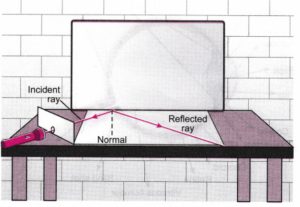
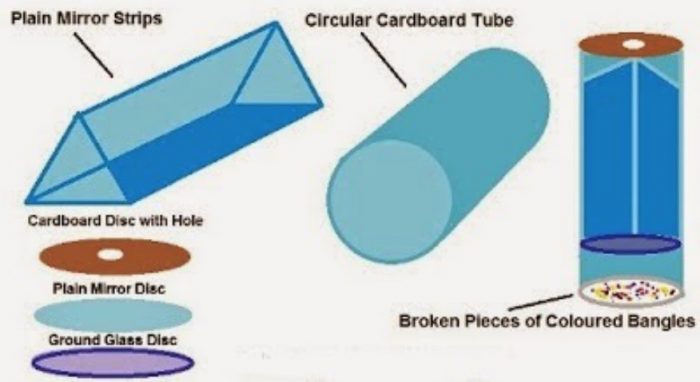
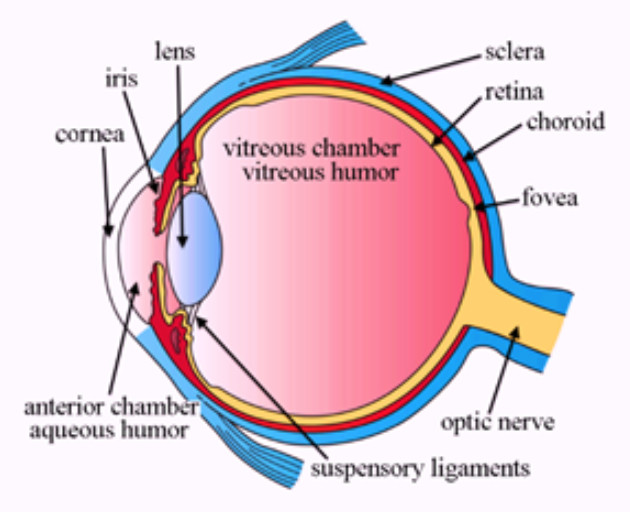
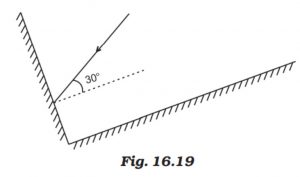
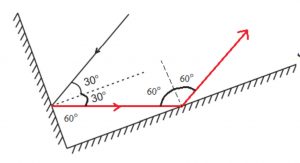
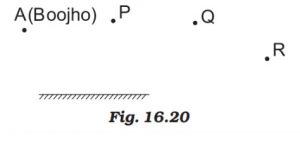
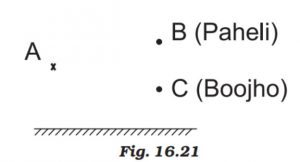

Nice solutions
Nice response
Nice answers
Nicely explained
Very useful and nice
nicely explained
Very useful for study and nicely explained
Very useful for study and nicely explained
Very nice answers explained and useful for study
Good answers and useful for me.
Nice
Nice answers and good explain
Very helpful solutions for me thanks
Good……
Nice solutions …..